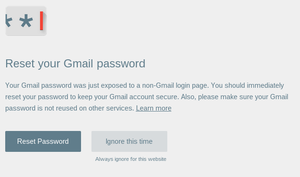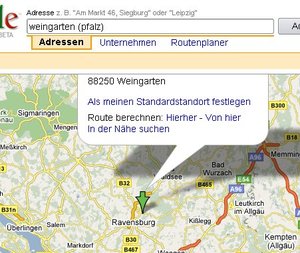Entries tagged as google
bypass javascript password passwordalert security vulnerability freesoftware 23c3 27c3 3d 3ddrucker adobe amusementpark asia ati backnang base64 bash beijing berlin beryl bios blob bonn bufferoverflow camera canon ccc cellular chdk chemnitz china chromium cinderella cinelerra clt code codecs compiz compizfusion composite compression console copyright creativecommons csrf css cve ddwrt debian desktop developingworld digitalcamera disney disneyland driver dvd eltorito evince exe fake ffmpeg film firefox firmware france freeculture freewvs freiegesellschaft freifunk frequencies frequency froscon froscon2007 fsf fsfe gaia games gargoyle gentoo ghost gimp glibc gnome googleearth graphics grub gsm hardware heartbleed homebrew ibm ico icons icoutils iso itu ixus jugendumweltbewegung jukss karlsruhe kde königswusterhausen kpdf laptop lenovo lessig license linux lpi lpic lspci lsusb lug memdisk messe microsoft mobilephones movie musik nancy nessus nouveau nvidia ökologie okular olpc openbsc openbts openexpo opengl opensourceexpo openssl openstreetmap openvas osmocombb pciids pdf phoronix php poppler presse privacy rapidprototyping rar realmedia realvideo redhat reprap retrogames reverseengineering rmll router rv30 rv40 s9y science sciencefiction script serendipity sfd shellshock shijingshan siegburg simcity society softwarefreedomday sqlinjection stepmania sumatrapdf sunras syslinux talk theory thesource theunarchiver thinkpad travel trip2011 tuxmas unar usbids video videoediting web wii wiibrew wiki windows windowsrefund wiretapping wos wos4 wrestool xorg xss geographie googlemaps gps entropia exif garmin gebabbel geo geocaching geodaten geotagging gpsbabel gpx josm jpeg mapsource mobiletrailexplorer murrhardt quest routing wine ajax apache azure browser clickjacking cryptography domain escapa ftp gobi helma html itsecurity khtml konqueror lemmings modulobias mozilla mpaa newspaper random salinecourier subdomain userdir webcore websecurity xsa 1und1 4k ac100 addresssanitizer aiglx android apt artikel asan assembler augsburg augsburgerallgemeine bahn c cacert cardreader ccwn clang come2linux core coredump cpu cpufreq crash darmstadt deb delilinux demoscene distribution dmidecode drm english essen esslingen fedora fma86t frankreich freedesktop gadgets gammu gatos gcc gnokii gnupg gpg gphoto gpn gpn5 grsecurity gtk hacker harddisk hash hddtemp howto hp http inkscape installparty iptables kgtk kubuntu libressl lit07 lm_sensors ludwigsburg luga lugbk macos mandriva md5 memorysafety memorystick metisse mobile motherboard mplayer mrmcd mrmcd101b multimedia network nokia notebook omnibook openbsd openpgp overheatd overheating packagemanagement passwörter pcmagazin pcmcia pgp programming proxy ptp qt r300 radeon randr12 ricoh rpm samsung schokokeks sd sdricohcs segfault server sha1 signatures smart smartbook smartmontools sncf squid ssl standards subnotebook support symlink t61 time tls toshiba tv tvout ubuntu unicode usability usb useafterfree utf-8 vc-1 vista vortrag waiblingen web20 webhosting webinale webroot webserver win32codecs wlan wmv x1carbon xgl zeitung badcannstatt cannstatt kino osm osm2poly osmosis press rtl bnn c4 cccs cctv datenschutz earth gpn7 kaisersbach mars media merkaartor peterschaar planet re-publica re-publica09 rp09 spiegel stuttgart surveillance tomorrow überwachung überwachungskameras auskunftsanspruch botnetz bsi bugtracker bundesdatenschutzgesetz github leak nextcloud owncloud passwort sicherheit staatsanwaltschaft zugangsdaten blowfish onlinetvrecorder otrkey schneier 0days adguard aead aes afra algorithm altushost antivir antivirus aok axfr badkeys barcamp berserk bias bigbluebutton bleichenbacher blog bodensee braunschweig bsideshn bugbounty bundestrojaner bundesverfassungsgericht busby ca cbc cccamp11 certificate cfb chcounter chrome clamav cloudflare cmi cms conflictofinterest cookie crypto dell deolalikar diffiehellman dingens diploma diplomarbeit distributions dns drupal easterhegg edellroot eff email encryption eplus facebook fileexfiltration firewall fortigate fortinet forwardsecrecy freak fuzzing gajim gallery git gnutls gsoc gstreamer hackerone hacking hannover https infoleak informationdisclosure internetscan ircbot jabber jodconverter joomla kaspersky key keyexchange komodia libreoffice luckythirteen malware maninthemiddle mantis math mephisto milleniumproblems mitm moodle mrmcd100b mysql napster netfiltersdk nist nss ntp ntpd observatory onlinedurchsuchung openid openidconnect openleaks otr padding panda papierlos pdo phishing pnp poodle privatekey privdog protocolfilters provablesecurity pss python rand rc2 rhein rsa rsapss rss schlüssel session sha2 sha256 sha512 shellbot slides smime snallygaster sni sniffing spam squirrelmail sso stacktrace study superfish taz thesis tlsdate toendacms transvalid unicef update updates verschlüsselung virus vlc vulnerabilities webapps webmontag wiesbaden windowsxp wordpress x509 xine xmpp zerodays zzuf
 A few days ago Google released a Chrome extension that emits a warning if a user types in his Google account password on a foreign webpage. This is meant as a protection against phishing pages.
A few days ago Google released a Chrome extension that emits a warning if a user types in his Google account password on a foreign webpage. This is meant as a protection against phishing pages. 